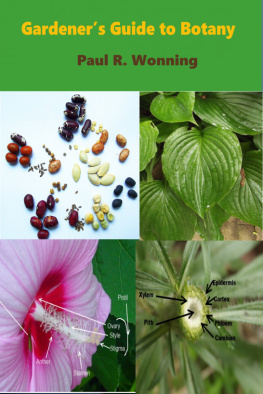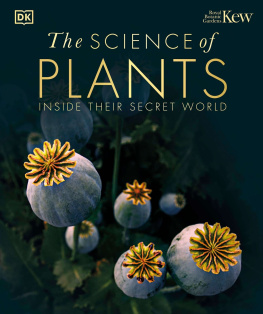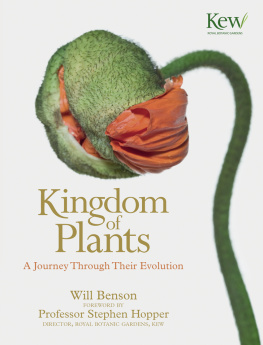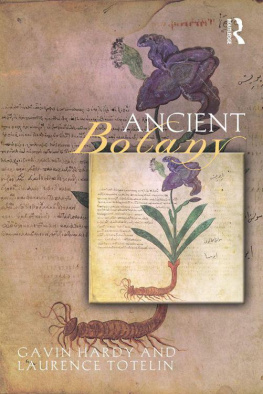BOTANY AT THE BAR
The Art and Science of Making Bitters
Bring the flavor and stories of plants from around the world to your beverage through science-based craft bitters.
Selena Ahmed Ashley DuVal Rachel Meyer
Creators of Shoots & Roots Bitters
Cocktail Recipes: Christian Schaal, Kevin Denton, and Shoots & Roots
Shrub Recipes: Jim Merson

Introduction
Humans have always depended on plants. Ethnobotanists explore this interaction of plants and people. Many are scientists who explore traditional uses of biodiversity for medicines, food and beverages, and other cultural activities. We are three ethnobotanists who have always been captivated by the scents, sights, and tastes of the plants and landscapes where we do our fieldwork. United by a shared passion to communicate what we have learned, the three of us came together as Shoots & Roots Bitters. Here, we create and share science-based craft bitters that draw from ecology, practices, and flavors from around the world.

We met during graduate studies more than a decade ago through The New York Botanical Garden. While each of us had different research directions, we all shared a passion for biodiversity and culturally important plantsfrom studying them to tasting them (when edible). From examining the genetics of wild tea trees deep in the forests of Southwest China to studying historical patterns in crop domestication and the science of flavor, we began to collaborate on projects.
Biodiversity conservation is a critical need in the age of the Anthropocene, as is the preservation of associated traditional knowledge and practices. Scientists are more motivated than ever to communicate these challenges.
Our own efforts to connect with the public would eventually become Shoots and Roots Bitters, a company through which we are devoted to the science of plants and people. This book brings together ethnobotany and recipes about hundreds of important plants from around the world. We hope that our readers can take part in global traditions and botanical diversity in their own homes through the creation of bitters and other botanical beverages.
Why bitters? Bitters are botanical infusions from multiple plant species that, when combined, form a complementary flavor profile. By creating bitters, we are able to tell complex stories, be it their symbology or ecology.
Shoots & Roots Bitters founders (from left) Rachel Meyer, Selena Ahmed, and Ashley DuVal share the charms of the lab and seek to make research exciting and inclusive.
A Kitchen in the Lab
Brewing bitters is a creative art and, as scientists, we have a great asset: laboratory equipment. Working in the phytochemistry lab at the City University of New York (phytochemistry being the science of chemicals derived from plants), we were able to play with all sorts of equipment to explore the range of flavors in every plant. It wasnt long until we began using bitters as interactive tools in ethnobotanical workshops, and eventually, we began to produce them commercially.
Rachel Meyer extracting botanicals with liquid nitrogen at the New York Botanical Garden Plant Research Laboratory, where the Shoots & Roots Bitters team learned to extract DNA, RNA, and phytochemicals for research on wild and domesticated plant diversity. Rachel was studying eggplant and other nightshades, Selena was studying tea, and Ashley was studying aai.
What We Do
The mission of Shoots & Roots Bitters is to promote botanical education and conservation through science-based craft bitters and associated events. We host interactive workshops on botanical topics that range from exploring the histories of domesticated plants, scientific approaches toward making and using bitters, the science of flavor, and environmental diversity and sustainability. Coming face to face with plants, getting messy and rowdy extracting them, and tasting these extractions with strangers is a really fun way to spread the word about the achievements of traditional knowledge and botanical research breakthroughs.
While running Shoots & Roots Bitters, all of us have also maintained full-time careers as academic researchers. Meeting so many different people through our company has helped us see science with fresh eyes: it is humbling to discover the depth and variety of scientific knowledge outside of traditional science. Our experiences have also fired us up as activists. Working together as individuals from different backgrounds, and as women collaborating in a male-dominated industry, has sharpened our awareness of just how important it is to consider multiple perspectives from diverse geographies and sectors of society. We work with as many allies as we can to promote botany in the beverage industry.
In many of the bitters described in this book, our approach is largely place-based, with many of our blends reflecting a diversity of regional plants. Attention to place-based biodiversity is more relevant than ever today because of rapid environmental and social change.
Our quest is to spread understanding and help preserve these irreplaceable aspects of our shared history. New markets and supply chains can be encouraged through connections between science research networks, communities, and the craft innovators we hold as mentorsthe chefs, bartenders, consumers, and liquor makers. Forgotten plants may get some time in the spotlight. And yes, that may be in the form of a better martini.
How to Use This Book
This book covers the cultural, botanical, sensory, and health aspects of bitters; empowers you to make your own science-based bitters; and gives you inspiration for your own drink recipes. integrates botany with the bar, written in full collaboration with the professionals: Christian Schaal, bar manager and mixologist at Zebulon in Los Angeles; Kevin Denton, Head of Education and Mixology for Pernod Ricard in New York; and Jim Merson, owner of Hot Dog Sodas, who has designed shrubs for some of the freshest joints. Each drink features a special plant profile with science from ethnobotany to natural history. The final chapter contains a plant directory with a broad geographic representation of our 125 favorite botanicals that we have tried and tested. This directory includes many underutilized plants that could benefit from expanded interest in their cultivation, conservation, and use. So you can continue your exploration, at the end of the book you will find advice for making completely new bitters recipes from botanicals you source. We also include some more references for further reading, and online sources for obtaining quality dry ingredients for making bitters.
We hope you enjoy this book as much as we have enjoyed creating it. Raise a glass to people, plants, and the drinkable science in-between.











